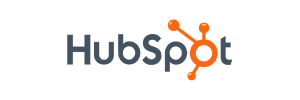Introduction
In the world of search engine optimization (SEO), internal linking is a powerful on-page strategy that often goes overlooked. While external links from other websites are important for building authority, internal links play a critical role in optimizing your website’s structure and improving its visibility in search engine results. In this blog post, we will explore effective strategies for utilizing internal linking to enhance your on-page SEO efforts and drive organic traffic to your website.(Internal Linking Strategies to Improve On-Page SEO)
Understand the Importance of Internal Linking
Internal linking refers to the practice of linking one page of your website to another page within the same domain. These links help search engine crawlers navigate and understand the structure and hierarchy of your website’s content. Additionally, internal links distribute link equity, also known as “link juice,” throughout your website, boosting the visibility and ranking potential of linked pages.
Create a Logical Site Structure
Before implementing internal links, it’s crucial to have a well-organized site structure. Divide your website into relevant categories and subcategories to create a logical hierarchy. This hierarchical structure helps search engines understand the relationship between different pages and ensures that link equity flows smoothly throughout your site.
Use Descriptive Anchor Text
Anchor text is the visible, clickable text that appears in a hyperlink. When creating internal links, it’s essential to use descriptive anchor text that accurately describes the linked page’s content. Avoid generic terms like “click here” or “learn more.” Instead, incorporate relevant keywords that provide context and indicate the content users can expect when they click on the link. This approach not only improves user experience but also helps search engines understand the relevance and topic of the linked page.
Prioritize Relevant and Contextual Links
Internal links should be relevant and contextual to provide value to your website visitors. Identify opportunities to link related content within your website. For example, if you’re writing a blog post about a specific topic and have a relevant, in-depth article on the same subject, link to that article using targeted anchor text. This interlinking strategy not only helps users find additional valuable information but also signals to search engines that the linked page is authoritative and comprehensive.
The navigation menu of your website serves as a powerful internal linking tool. Ensure that your menu is well-structured and includes links to the most important pages of your site. Incorporate targeted keywords in the anchor text of these menu links to further enhance their SEO value. Additionally, consider including a “related articles” or “popular posts” section on your pages, providing users with additional internal links to explore relevant content.
Update and Audit Internal Links
Regularly review and update your internal links to maintain an optimized website structure. As your content evolves over time, pages may be added, removed, or modified. Broken or outdated internal links can negatively impact user experience and SEO. Use tools like Google Search Console or third-party website crawlers to identify any broken links or pages with missing internal links. Fixing these issues will ensure that your internal linking remains effective and your website stays crawlable and user-friendly.
Conclusion
Internal linking is an often overlooked but powerful on-page SEO strategy that can significantly impact your website’s visibility and search engine rankings. By creating a logical site structure, using descriptive anchor text, prioritizing relevant links, optimizing the navigation menu, and regularly auditing and updating internal links, you can maximize the SEO potential of your website. Implementing these strategies will not only improve your on-page SEO but also enhance user experience, leading to increased engagement and organic traffic. Embrace the power of internal linking and unlock the full potential of your website’s visibility in search engine results.







